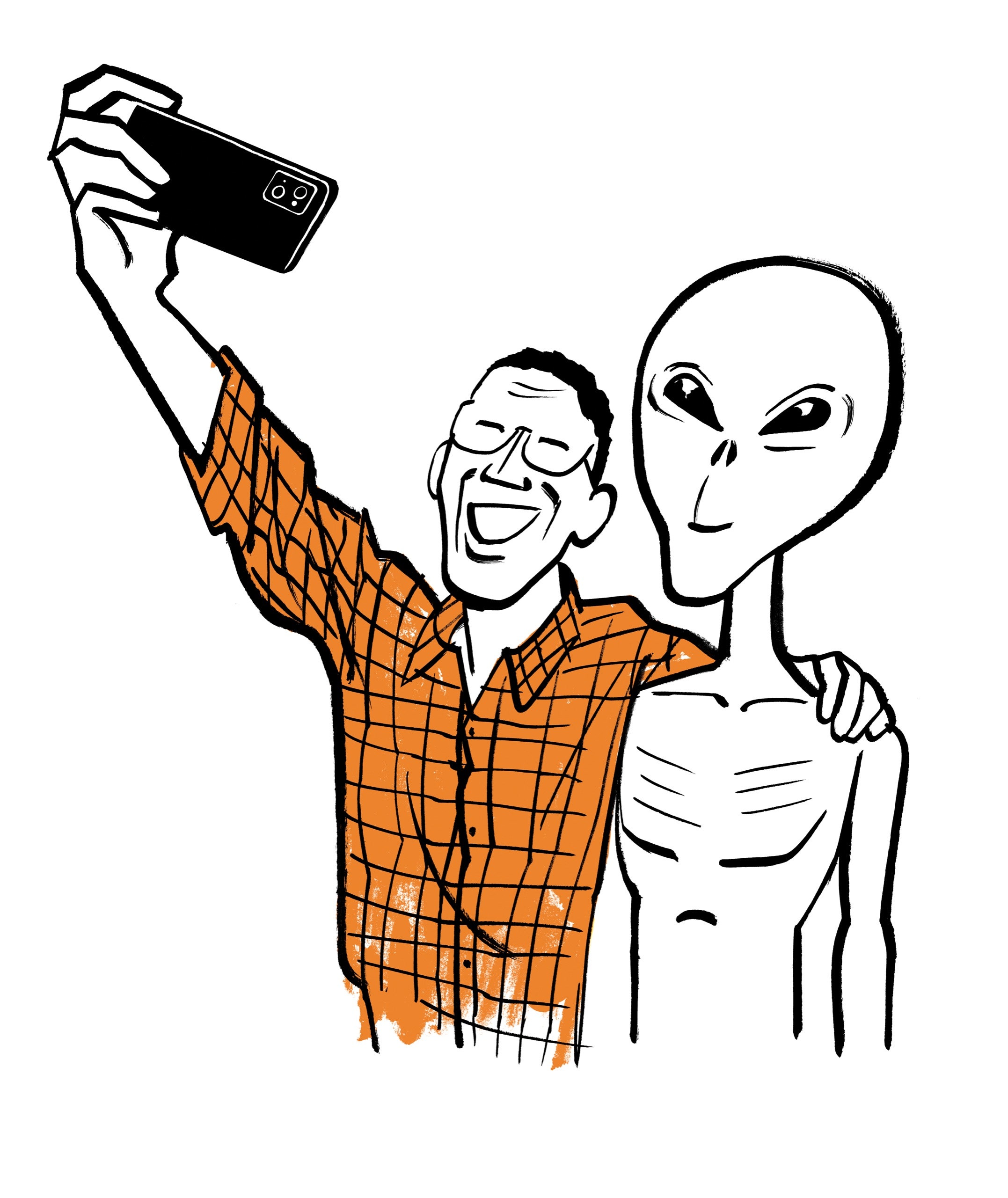The Truth Is Out There, on an App
The Truth Is Out There, on an App
January 22, 2024

Are aliens among us? Last September, NASA released its Unidentified Anomalous Phenomena Independent Study Team Report. (“U.A.P.” is just a rebranding of “U.F.O.,” without the flying-saucer baggage.) The study team recommended that NASA collect and analyze more types of data in more types of ways than ever before. The agency has long had satellites and supercomputers at its disposal; the report said that it should also branch out into smartphone apps, for crowdsourcing sightings. The creator of one such app, Enigma Labs, was not named in the report, but its authors have met with the company.
Enigma’s founder and C.E.O. is something of an unidentified anomalous phenomenon herself. Publicly, she goes by a single initial, “A.” “It has allowed me to really focus,” she said of the pseudonym recently, at Enigma’s offices, on the Lower East Side, “because there’s so much noise out there. The Internet’s full of keyboard warriors.”
Citizens report U.A.P. sightings on the Enigma app and can also view reports clustered by location. An augmented-reality lens lets users point a phone upward, and then displays and I.D.s planes, satellites, and other mundane objects. A, who is tall and thin, said, “It’s Shazam for what’s in the skies.” There’s also a camera feature that records uncompressed video and embeds metadata, such as filming location and angle, for later description and verification of phenomena.
A expects the app to inspire a growing movement. “It’s no different from people who go to Burning Man or are into wellness, meditation, yoga, psychedelics, all that stuff,” she said. “What we’re really banking on is this movement that I think SpaceX, the Webb telescope, all of this, is driving, which is just as interesting—Are we alone?” She described the range of experiences that users report: “At the very casual end, it’s, ‘I was drunk and saw a Starlink,’ or whatever. On the very extreme end, it’s, ‘This moment was the biggest moment in my life.’ ” While implementing data science, the team wants to offer a safe space for users who may feel traumatized and isolated. Enigma Labs decided not to mark cases on the app as resolved (when, say, the U.A.P. is clearly a balloon); they won’t harsh anyone’s buzz. “We’re in listening mode,” A said.
As opposed to Martian hunters who fixate on little green men, A said, “we see ourselves as a quite clean break from the past, and just approaching it as a Silicon Valley startup would approach any problem.” Enigma is in talks with government agencies about combining its reports with radar and satellite data. She went on, “The holy grail is to have the low-side civilians and the high-side eyes on the same thing.”
Two Enigma data scientists joined A in a conference room to discuss how they were using machine learning to assign a score to sightings, based on factors such as credibility and unidentifiability. The algorithm is still a work in progress. A recent browsing of sighting reports included one, from Delaware City, which began, “Watching vintage baseball game, spotted 4, stationary, metallic objects to the north of our location.” A photo reveals what look like marker balls on power lines. (Score: 36 out of 100.)
Another user posted a video of a black dot in a blue sky, perhaps a bag in the breeze, near the Empire State Building. “It’s like doing a breaststroke motion,” the observer commented. “It kind of looked like it was swimming through gravity waves.” (Score: 19.)
Two outside guests attended an all-hands meeting. One, Nick Pope, who investigated U.A.P.s at the U.K.’s Ministry of Defense and now does media commentary for such TV shows as “Ancient Aliens,” described alien sightings as “almost the ultimate low-probability, high-impact scenario.” The other, Josh McFarland, a venture capitalist, gave a business pep talk. “You’re looking for speeds, maneuvers, and accelerations outside of the natural envelope,” he said. “That’s the definition of a startup.”
“If I was Sean Kirkpatrick,” Pope said, naming the then director of the Department of Defense’s All-domain Anomaly Resolution Office, “I would be saying, ‘Please take this for us.’ Because you’ll get some good stuff, but you get the crazies. There’s no way he can do his job if he’s inundated with public data, yet Congress has kind of mandated you to do that job.”
“Well, the congressmen know us pretty well,” A said. “I’ve met with a lot of them, and they love us. ”
Employees keep their levels of belief to themselves. A isn’t interested in trying to explain stubborn U.A.P. cases; she’s happy to entertain the possibility of ancient aliens, future humans, advanced fighters, billionaires’ antigravity toys, multidimensional projections, or humdrum drones. “U.A.P. is a new field,” she said. “It can’t be a category until you have data to work with. We’re doing the picks and shovels of that. And hopefully we’ll empower a lot of people to come up with their own theories. We’ll leave that to the Nobel Prize winners.” ♦
This article has been archived for your research. The original version from The New Yorker can be found here.

